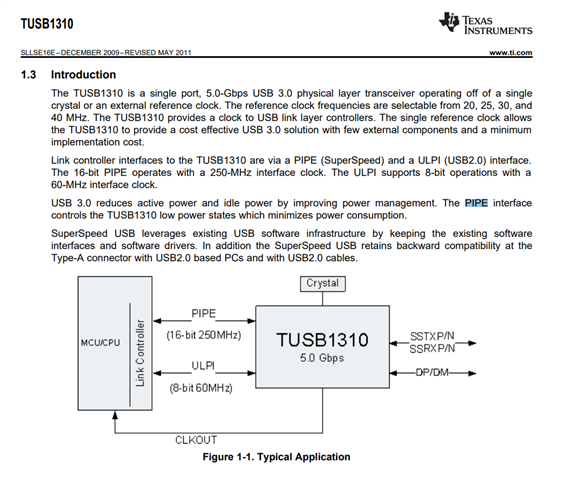I have some questions regarding USB 3.0 Transceiver.
1- The PIPE interface between MCU and the USB 3.0 Transceiver in Figure 1-1 in datasheet. The PIPE interface is 16 bit wide 250 MHz. This interface is Single Data Rate (SDR). Does it means at 1 bit per cycle ? In other words 250 Mega bits per second ?
2- The PIPE interface Table 2-2 shows the list of signals. There are 16 bit TX-DATA and 16 bit RX Data. They are not differential signals, right ? This means they can be routed on the PCB as single ended traces, right ?
3- The ULPI interface is only for USB 2.0. The connector pins are DP/DM as shown in Figure 1-1 in the datasheet. This look like 480 MHz (8 bit x 60 MHz) at the pins DP/DM for USB 2.0. Is that correct ?
4- How do get 5.0 Gbps on SSTX P/N and SSRX P/N ? I assume USB 3.0 is full duplex that means 5.0 Gbps on SSTX P/N and 5.0 Gbbs on SSRX P/N at the same time, right ?
5- When USB 3.0 device is used then only SSTX P/N and SSRX P/N transfer the data ? meaning there is no exchange of data on DP/DM pins USB 2.0, right ?
6- The PIPE interface 16 bit x 250 MHz is 4000 MHz or 4000 Mbps. How we get 5.0 Gbps ?



